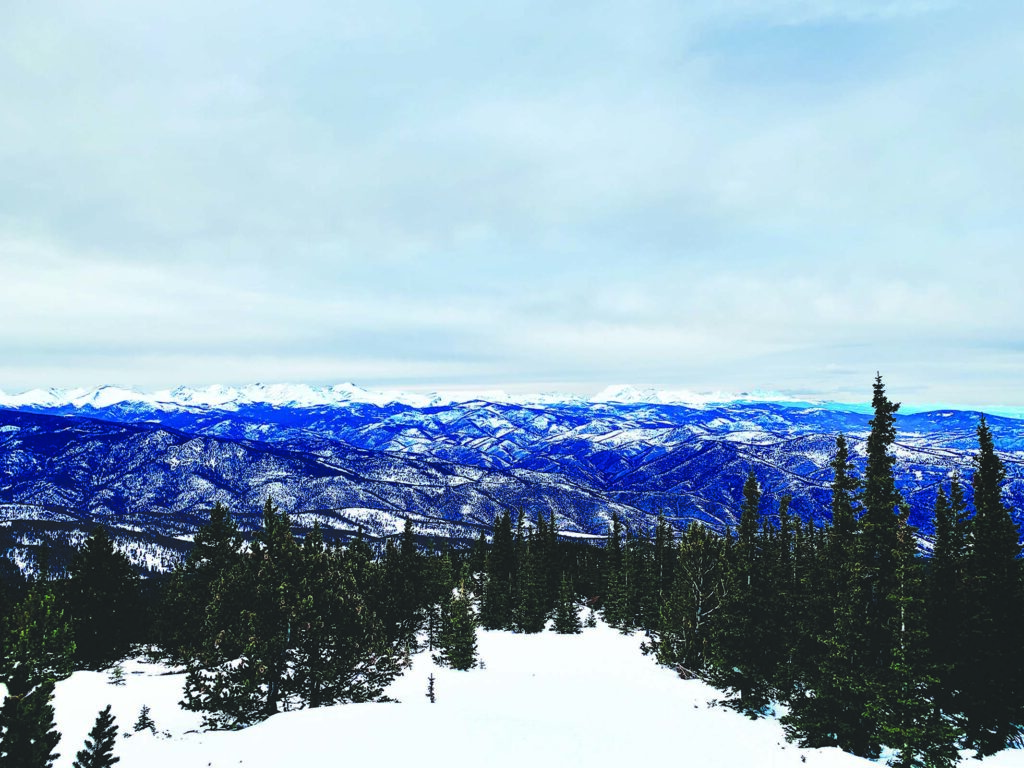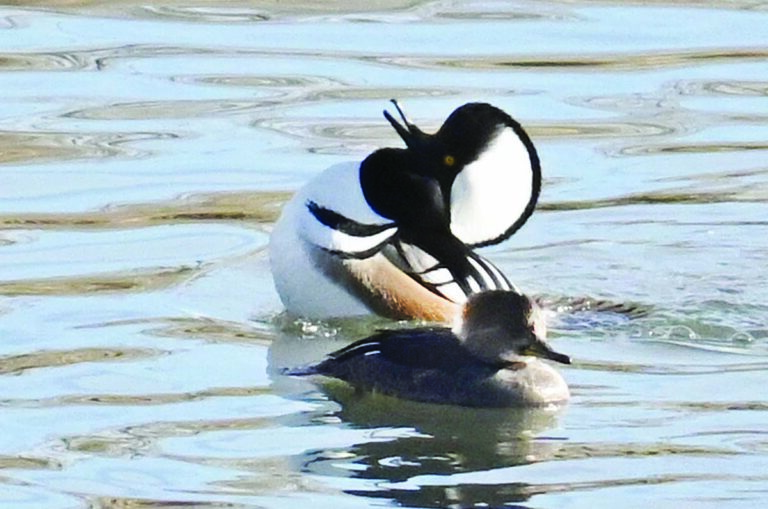Recent snowy weather has presented the perfect opportunity to dust off my snowshoes and hit the trails. One of my favorite winter gems is the Chief Mountain trail, located near the historic mining town of Idaho Springs, an hour’s drive from Wheat Ridge. The scenic drive to the trail is always a delight, presenting awe-inspiring views of the snow-cloaked mountain landscape.
The trailhead to Chief Mountain is located along the south side of Colorado State Highway 103 between Evergreen and Idaho Springs. I began my adventure on a crisp afternoon and followed the trail as it weaved up through towering aromatic spruce and fir pines. Snow started lightly falling, and it felt like I was in a magical snow globe, with the only sound being the rhythm of the crunch of snow underneath. The trail is a moderate 3-mile hike that gently winds 1000 feet up the mountain and rewards with increasingly spectacular views. The last stretch opens to steep, rocky alpine tundra terrain and can be extremely windy. The summit of Chief Mountain, at 11,709 feet, offers 360-degree panoramic views that are nothing short of spectacular. To the east, the vast plains stretch out toward the horizon, while the west offers a stunning display of the Rocky Mountains’ rugged peaks, including iconic Mount Blue Sky, Pikes Peak, Mount Goliath, Rogers Peak, and Roslin Peak. The rocky formations atop Chief Mountain offer a dramatic and rugged landscape to explore and enjoy the incredible views.
For those inspired to take on Chief Mountain in the winter, a few tips can make the journey more enjoyable:
Prepare ahead – Check current trail conditions and weather forecast before setting out on a hike. I use the AllTrails app to access detailed offline maps and trail guides, vital for navigation in areas with limited or no cell service. I love using the WeatherBug to get current weather forecasts to help plan and adapt to ever-changing weather conditions.
Bring proper gear – Ensure your snowshoes fit the conditions, with appropriate bindings and poles for added balance. Deep snow can make hiking miserably exhausting as each step without proper snowshoes can result in “post-holing,” where a hiker’s leg sinks deep in fresh snow. Snowshoes are also helpful on icy surfaces due to their metal crampons and side rails that bite the ice to provide traction. These features help navigate icy trails and steep inclines in winter conditions.
Dress Appropriately – Layering is crucial to managing body temperature in cold temperatures.
Stay Hydrated and Energized: Cold weather can deceptively reduce the feeling of thirst. Pack water, hydration tablets and high-energy snacks.
Practice Leave-no-trace principles – Help ensure the preservation of the natural beauty of Chief Mountain for future adventurers.
Careful preparation ensures a snowshoeing experience that will be safe and enjoyable.
Snowshoeing on Chief Mountain offers a memorable escape into the heart of Colorado’s winter landscape. It’s a journey that challenges the body and invigorates the mind. Whether you’re a seasoned snowshoer or trying it for the first time, the trail to Chief Mountain’s summit is a rewarding journey.






